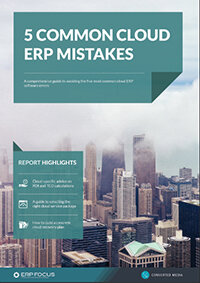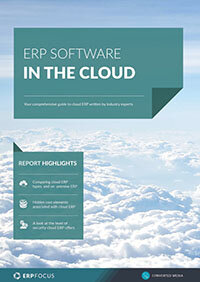Integrating ERP Across Platforms: Considerable Challenges
In the case of ERP integration across delivery platforms (cloud to on-premise, on-premise to cloud etc.), one needs to look at things from the bottom up. This is particularly the case when dealing with systems that assert commonality but in the end behave quite differently to one another. This is very much the same strategy that one must take when planning premise-only or cloud-only internal integration but with a couple of important nuances.
Platform-to-Platform Issues, and Then Some
Many of the same problems that occur during *platform-to-platform integration exist when integrating across delivery platforms systems as well, only the addition of data transfer elements makes the latter even more daunting.
Granted, if one is working with pure ERP systems on both ends of the on-premise to cloud spectrum, at least there are common data and operational similarities. But data transfer can still cause a number of issues such as harmonizing data rates and other related network-based processes. These issues can lead to an unclear view of the ERP integration project for your project team.
if one is working with pure ERP systems on both ends of the on-premise to cloud spectrum, at least there are common data and operational similarities.
For example, if you feel that your system-to-system data field response is slow, one might immediately believe that the obvious problem must lie somewhere within *the on-premise or cloud installation, when in fact the WAN may the actual culprit. On top of this concern, there is the ubiquitous nature of CLEC or Data Center irregularities, and in either of these cases, a third-party support element has to be utilized to get the job done.
Considering Considerable Play in the Schedule
In this case particularly, one will need to assume glacially slow response to your needs. I’m not saying that there are good telecommunications folks out there, but the fact is that they are being stretched very thin these days for a host of reasons - mainly due to cost constraints posed by the global economy. Consequently, *when planning an ERP integration schedule, one should allow for a considerable play in the schedule, perhaps as much as 50% just to give oneself a fighting chance to end up being on-time.
Free white paper

ERP Implementation: 9 steps to success
The 9 proven steps you should follow when implementing ERP

Featured white papers
-

Five common cloud ERP mistakes
Get your comprehensive guide to avoiding the five most common cloud ERP errors
Download -

Related articles
-

Nine signs you need an eCommerce ERP integration
A guest blog from Brightpearl discussing eCommerce ERP and integration
-

Secret KPI: Why Your ERP Implementation Team Matters More Than Software
Learn how Godlan ensures successful ERP implementation for manufacturers with proven strategies &...
-

Top 10 ERP selection criteria (including checklist)
The most important ERP selection criteria you should keep in mind during your selection process.

